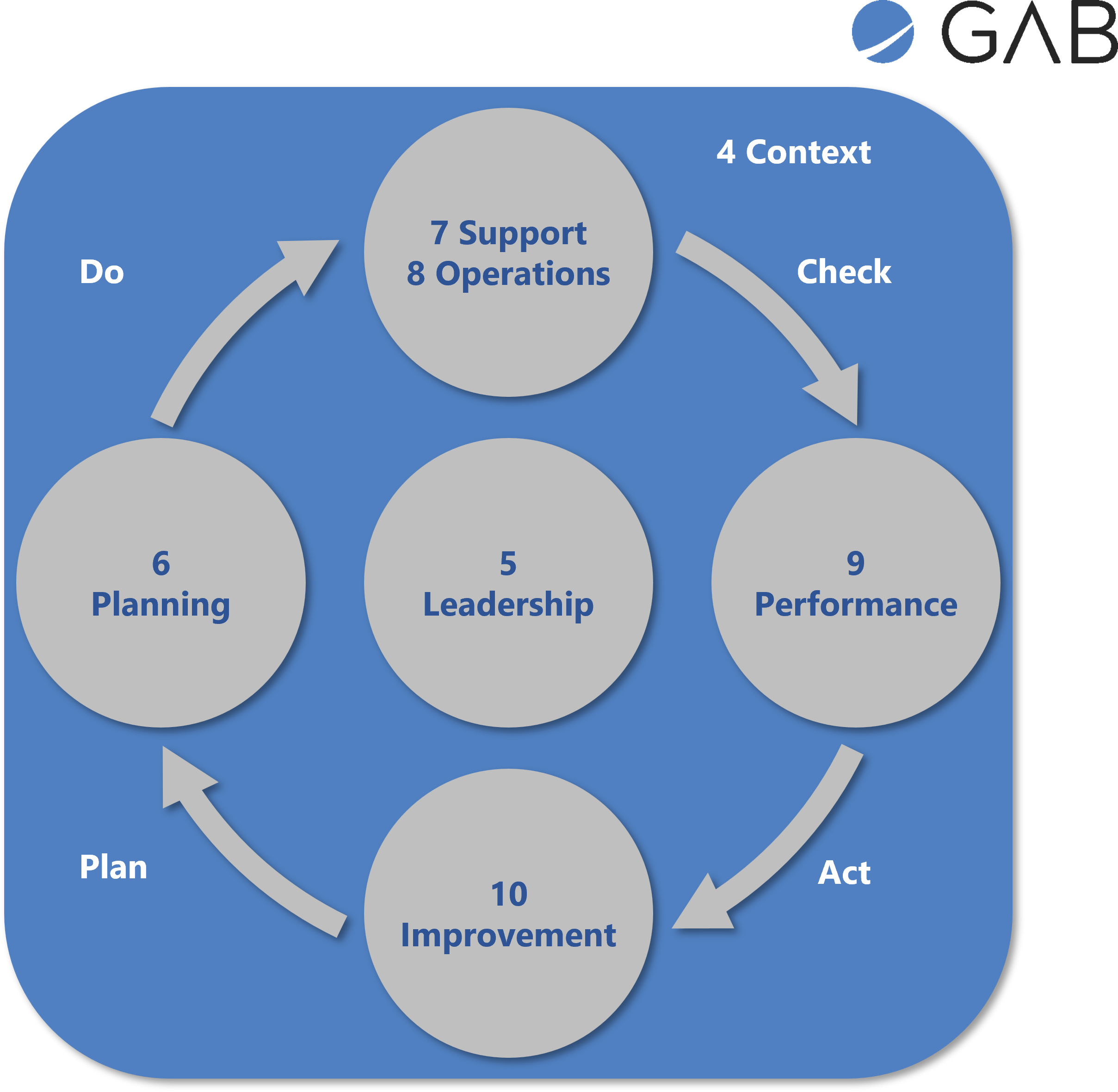FAQ
What is the structure of ISO/IEC 27001?
ISO/IEC 27001 is a standard that defines the requirements for an information security management system (ISMS). It consists of various sections that cover the following:
1. Scope: Describes the scope of the standard and defines its application to all types of organizations and information.
2. Normative references: Contains a list of other relevant standards and documents referenced.
3. Terms and Definitions: Defines the key terms and definitions used in the standard to ensure consistency of understanding.
4. Context of the organization: Describes the requirements for the organization to define the context and framework for the ISMS. This includes internal and external influences, interested parties, and compliance obligations.
5. Leadership: Emphasizes the importance of top management commitment to the ISMS and establishes requirements for leadership, policies, roles, and responsibilities.
6. Planning: includes requirements for assessing risk, addressing risks and opportunities, setting objectives, and selecting appropriate controls.
7. Support: Describes the requirements for resources, competence, awareness, communication, documentation, and control of documents.
8. Operations: Establishes requirements for implementing risk treatment and conducting operations such as change management, security incident handling, and business continuity planning.
9. Performance evaluation: Contains requirements for monitoring, measuring, analyzing, and evaluating the performance of the ISMS, including internal audits and management reviews.
10. Improvement: Establishes requirements for continuous improvement of the ISMS based on the results of performance assessment, internal audits, and nonconformance handling.
The ISO/IEC 27001 standard provides a systematic method for establishing and maintaining an effective ISMS to ensure information security in organizations. It enables companies to identify risks, implement appropriate controls, and continuously improve information security.

What is the content of ISO/IEC 27001?
The ISO 27001 standard, formally known as "ISO/IEC 27001:2013 - Information technology - Security techniques - Information security management systems - Requirements," provides a framework for establishing, implementing, maintaining, and continually improving an information security management system (ISMS) within an organization.
The main purpose of ISO 27001 is to help organizations protect the confidentiality, integrity, and availability of their information assets. It provides a systematic approach to managing sensitive company information, such as customer data, intellectual property, and employee records, in order to mitigate the risks associated with their loss, unauthorized access, or unauthorized modification.
By implementing ISO 27001, organizations can identify and address potential security vulnerabilities, establish a risk management process, define security objectives and controls, and create a culture of information security awareness within their workforce. The standard promotes a holistic approach to information security management, encompassing people, processes, and technology.
ISO 27001 certification is voluntary and is often sought by organizations that want to demonstrate their commitment to protecting information assets and assuring stakeholders of their security measures. It can enhance an organization's reputation, build trust with customers and business partners, and provide a competitive advantage in the marketplace.
Overall, ISO 27001 helps organizations establish a robust information security management system that aligns with best practices, international standards, and legal/regulatory requirements, ultimately reducing the likelihood and impact of security incidents and enhancing overall information security posture.
